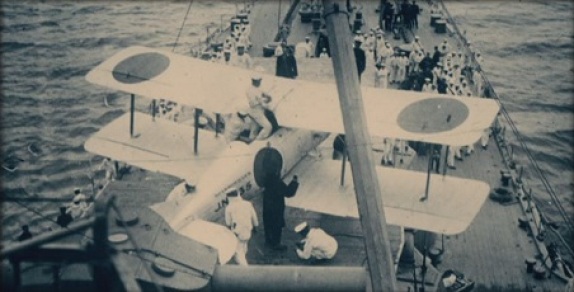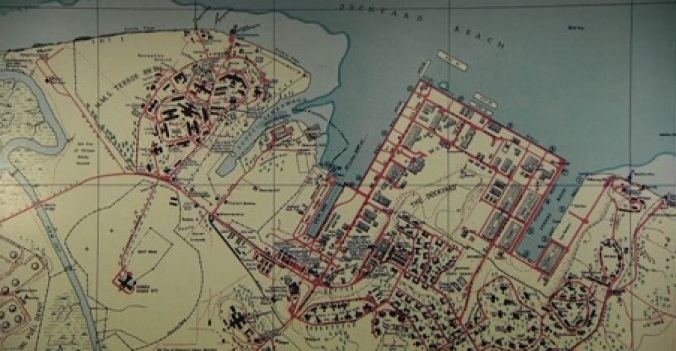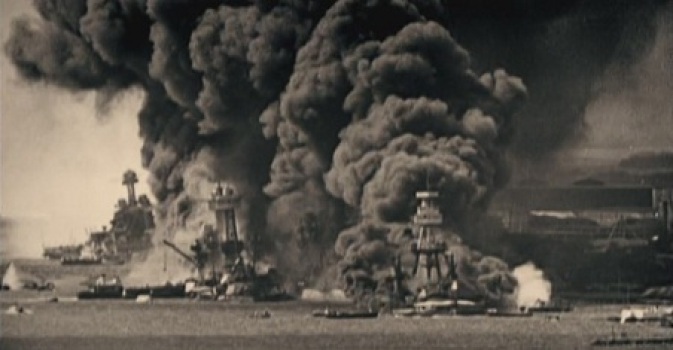“The Fall of Singapore”. The greatest disaster of the British Armed forces including the British Indian army in military history, only matched by the fall of Dhaka 29 years later, an achievement which was carried out by our Indian army in 1971. Very little is know about how the disaster happened. What was shocking was that British citizens at high places were responsible for handing over information to the Japanese for the bombing of the Pacific fleet at Pearl Harbour and the capture of Malaya and eventually, Singapore. What’s more, the information was being passed into Japanese for two decades after they infiltrated the heart of the British Government through a mole known to Churchill Himself.
During the First World War Japan had been an ally of the British. At the end of the War, Britain developed a new technology, which would change the course of history and shape a new World. The British had built the World’s first aircraft carrier, HMS Argus, in 1918, after which came another carrier, HMS Eagle. Both the carriers had interested the Japanese and they asked to inspect the new ships. But their requests were denied not one or two, but ten times, the Admiralty was convinced of their potential, and wanted to put it as a secret. But the Air Ministry and the Foreign Office saw the prospects of lucrative arms contract with Japan, so a compromise was made between the two parties.
In 1920, they sent a civil delegation of aviation experts, led by William Forbes-Sempill, also known as the Lord Sempill. He with the “Sempill Mission” as it was known went to Japan to help Japanese airmen study the new naval aviation technology, and build their first aircraft carrier, the Hosho, in 1922, after which the Japanese turned to someone who could train their pilots on the new aircraft carriers. Luckily for them Frederick Joseph Rutland made himself available. Frederick had risen from the ranks to become the Squadron Leader of the Eagle.
He was also known as Rutland of Jutland, as he was the spotter who had spotted the German fleet, and had earned the Albert medal for his duty. After 1920, Rutland decided to leave the Royal Navy and work with the Japanese, where he would work for them in building aircraft carriers and training men in using these carriers. According to him on his confession to MI-5, it was revealed that his intentions to do this work were because he thought that there wouldn’t be any war again therefore he decided to go to Japan where his company Mitsubishi was the Japanese Government itself and his office at Tokyo was just a cover for his activities.

After coming back to England, Sempill did not lose touch with his Japanese counterparts and started feeding them with every kind of technical information about the aircraft carriers, the bombs and torpedoes used by the planes on these carriers, and much more. But he had attracted the attention of MI-5 who were now looking into every detail of his moves, his telegrams, his letters, his back payments, phone calls, everything, which were going to Tejiro Toyoda, preferably his handler from Japanese Intelligence. Sempill had tried to gain information through British carrier designer Sir Tennyson d’Eyncourt and Air Vice Marshall Sir Charles Vyan, but the attempt failed. It is said that Sempill was paid handsomely by the Japanese. Sempill was questioned by MI-5 in 1926. With Sempill not admitting to the evidences MI-5 had secretly collected, it left the MI-5 in a tricky position, just when a relief came. Luckily for them, they had information from a witness regarding Sempill openly speaking on the Classified Project, Iris. He had violated the Official Secrets Act. Despite this, Sempill was left of any charge and was not prosecuted.
Thanks to their technical expertise, Japan now developed its carrier fleet, which came to be equivalent to their Royal Navy counterparts, and planned for the future invasion of different targets in the Southeast, where they focused on planting agents mostly in Malaya, particularly Singapore, through Penang. According to a treaty in 1920, Penang could be used as a dock for Japanese ships in the Southeast. Using this, many Japanese businesses came up in Malaya, and Singapore. The Japanese, using these businesses, put a web of sleeper agents all across the colony.
One of them, later revealed, was a barber at Singapore, who cut the hair of Commonwealth officials in Singapore. He turned out to be a Colonel in Japanese Intelligence. The problem faced now with the British was that they couldn’t differ between Japanese and the Chinese populace, both in Malaya and Singapore. If they did find about Japanese sleeper agents, they wouldn’t be able to trace them, as they would be interning thousands of Japanese for that. The Japs had struck at the very heart of Singapore, and the British Intelligence in the Southeast. Like MI-5 in London, British Intelligence in the Far-East was also an expert in the use of intercepts.
Earlier on the FESS or the Far Eastern Security Service had broken through the Japanese codes. But the code breakers were swamped. They had only seven people monitoring traffic for Asia, America and the Pacific, and there was no appetite in Whitehall for taking a hard line against Japan.
In 1931, Japan’s holy war had begun- they had invaded Chinese Manchuria. The British response to this worrying move was to fortify Singapore. A total of 50 million pounds turned Singapore into the largest fortified Naval Base in the world. Unfortunately, the Japs struck again, acquiring the plans of the new base, again a work of the sleeper agents, from a British serviceman, named Roberts, which could only be discovered a year later.

By 1936, British strategists believed any attack on Singapore would come by sea. However, a British Army Intelligence Officer Joe Vinden, working closely with the MI, thought that if Singapore were to be invaded, a land invasion of Malaya would be more logical, with the beach of Kotha Bharu bieng the landing zone, which was precisely what had happened on December 7th, 1941. He also adviced the British Government on spending the money more on buying new planes, but his advice was ignored. Instead, he retired.
In 1934, Sempill inherited the family title as the 19th Lord Sempill, and took his seat at the House Of Lords as a Conservative. He was also the President of the Royal Aeronautical Society. When war broke out, he joined Winston Churchill as a member of the admiralty. Although Sempill had said he would stop discussing secret matters with the Japanese,but his actions suggested otherwise, when in 1941, the Manager of Mitsubishi was arrested for spying, and Sempill assisted in his release, two days later. He was also now rumoured to be in the council of a Nazi Organisation, the ‘Link’, whose objective was to expose organised jury, and clear the conservative party off Jewish influence.
In 1941, the Placentia Bay Meeting took place, as the British Prime Minister Winston Churchill met face to face with the President of the United States of America Franklin Delano Roosevelt., on board HMS Prince of Wales. Churchill’s interest was to influence Roosevelt to join the war. Shortly after, a document classified for 60 years reveals that code breakers at Bletchley park had intercepted a wire from the Japanese Embassy at London to Tokyo, which gave a detailed account of the event. It was sent straight to the PM’s desk, where Churchill commented ‘pretty accurate stuff’ on the paper. It is still unknown about the spy behind this leak, but MI-5 came up with two names- Commander McGrath and Sempill. It was decided that Sempill was to leave his job, but Churchill decided to keep him in the admiralty.
During that time, Rutland was inspecting and photographing military installations at the American Naval Base at Pearl Harbour.He had now changed his services from technical services to espionage. He was also known among them, as a 60 millimetre moving camera. He too had come up on the FBI’s hit list, while the FBI was waiting for the opportune moment to catch him, but couldn’t, as two attacks happened on December 7th, in both the places on the same day.

On December 7th, 1941, Pearl Harbor was attacked by the Imperial Japanese Navy. Just two hours earlier, an attack on Kotha Bharu took place, as predicted by Joe Vinden. Churchill believed that if the commonwealth forces could hold on temporarily, the Pacific Fleet would come to their rescue. But that hope was shattered when Pearl Harbor was bombed. The Japanese also bombed Singapore, destroying the British planes stationed there, shattering the hopes of any Air assistance. Soldiers all across the region were soon sent to rescue Singapore.
The British Empire sent whatever ships they had in a fleet known as Force Z, headed by HMS Prince of Wales & HMS Repulse. Both ships were bombed & sunk by the Japanese, when the tried to intercept the Japanese Fleet, due to lack of air support. On the same day, Sempill was caught on a telephone call to the Japanese Embassy. His office was searched and admiralty files were found which he was not supposed to have were found with him. Despite all this, he was never charged.

On the 15th of February, 1942, the unthinkable happened. Singapore had fallen, with over 100,000 Allied POW s. For the Japanese, it was a pleasant surprise. They didn’t know what to do with so many POW s. Back in the House of Commons, during a secret session, MPs demanded an inquiry to explain how this happened. Rutland was eventually deported to Britain, where he committed suicide, while Sempill ended up back in Scotland, still working for the admiralty. He died in 1965. Despite anything, he was never charged.
With this, men of the same cause had not only betrayed their nation, but had wounded a superpower, and crippled an empire. With this, Britain not only lost its dominance in the Southeast, but also never could become a dominant power again in the region since.
Sources:
- BBC: The Fall of Singapore: A great betrayal
- Wikipedia
- My Personal Blog: http://thesoutheasttrail.blogspot.com/2014/10/the-fall-of-singapore-betrayal-that.html


